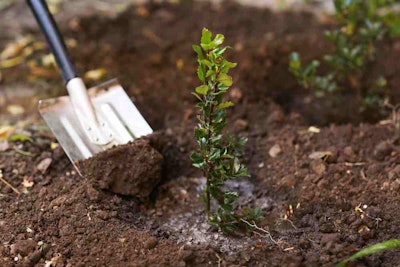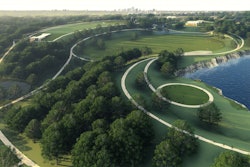
Whether you’ve learned this through trial and error or advice passed on from those who came before you, the lesson is the same: proper spacing is crucial in your customer’s garden.
Once the plants have had the chance to mature and spread, the ability to move and space them out is definitely not simple, so getting things right beforehand can ultimately save you a lot of headaches and strangled plants.
When planning out your customer’s landscape, there may be some plants they want present without a doubt, and other times, they may leave it up to you to decide what fits and looks best. Regardless of the situation, it’s up to you to know as much as you can about these plants before they ever hit the dirt.
Consider the lifecycle of the plants, which seasons they will bloom in, how long it will take them to grow to full maturity and how big they are estimated to get. Are they the type that will spread, or do they tend to stay in place once settled?
What’s important to note to your customers is that even though they may see a large chunk of open space still present after you’ve put the plants in, that doesn’t mean it will be vacant for long. This empty space is merely temporary, and in due time they will begin to see their well-spaced plants taking up the designated space.
When customers question why these spaces are necessary, talk to them about why spacing ultimately benefits the plants and the landscape as a whole.
Nutrients and disease management
It goes without saying that plants need nutrients to thrive. When too many plants are crowded into one area, it forces them to compete for the nutrients.
Overcrowded landscapes create situations where plants are pitted against each other and forced to fight for their food, which results in unhealthy, weak plants. Along with the aboveground struggle comes the underground match of these roots versus those roots. Ultimately, one plant will emerge victorious in the match and choke out the others too close to it.
When plants are properly spaced apart and are allowed their needed extra growth space, the likelihood that they will destroy neighboring plants diminishes, but it’s also important to remember that too much surrounding empty space can also be a problem.
Some plants require similar plants close to it so they are able to pollinate. Even in cases like that, the proper amount of spacing is still important for the aforementioned survival reasons.
Crowding plants can also lead to a higher risk of spreading sickness and disease among the entire garden. By spacing out your customer’s plants evenly, it can help cut down on contagion and improve the immune system of the plants.
Overcrowding plants can also lead to poor air circulation, which also increases their chances of catching diseases.
Weeding, harvesting and production
Keeping a watch for weeds is one of the most important aspects of garden care, as it helps keep your customer’s garden healthy and beautiful. When plants are too close together, it makes the garden much harder to weed. This will, you guessed it, lead to an abundance of weeds.
For customers wanting to literally enjoy the fruits of these labors, harvesting is something they will eventually get around to doing. For edible gardens that will actually be used for consuming, being able to navigate easily between rows and sections is important for gathering the spoils.
If the plants are too close together when it comes to harvest time, you or your customers could end up stepping on or uprooting neighboring plants in an effort to pick one type of plant. Keep in mind that being able to comfortably walk in between the rows is also imperative to harvesting plants.
If customers are still having trouble comprehending why space is so important to their garden and landscape, a simple way of saying it is: When plants have the proper amount of space, they produce more. If the garden has fewer plants but they are properly spaced, they will be healthier and produce more.
If you’re still unsure about the recommended amount of space you should use between plants, check out this plant space calculator or this plant space calculator chart from Four Star Greenhouse.











